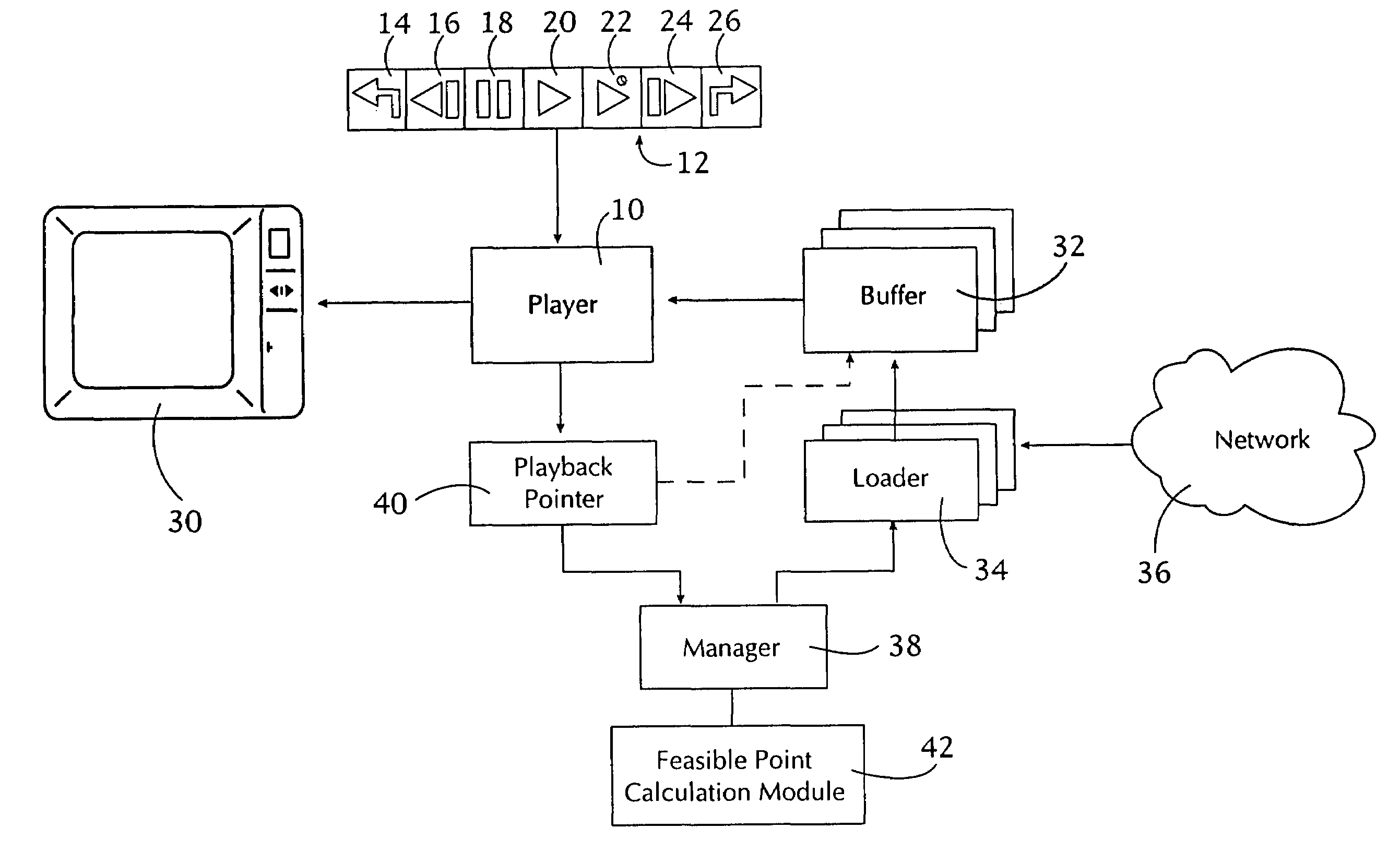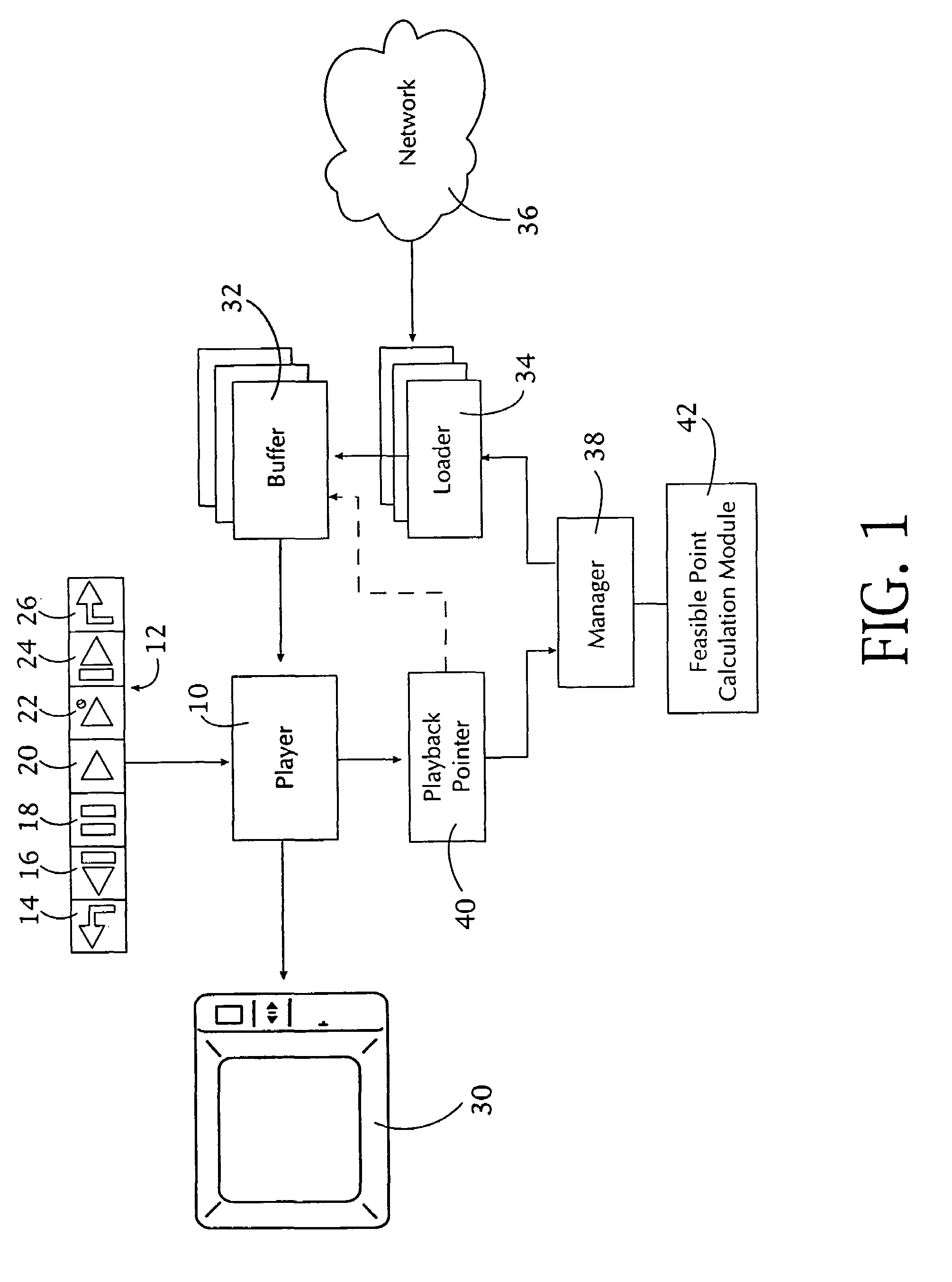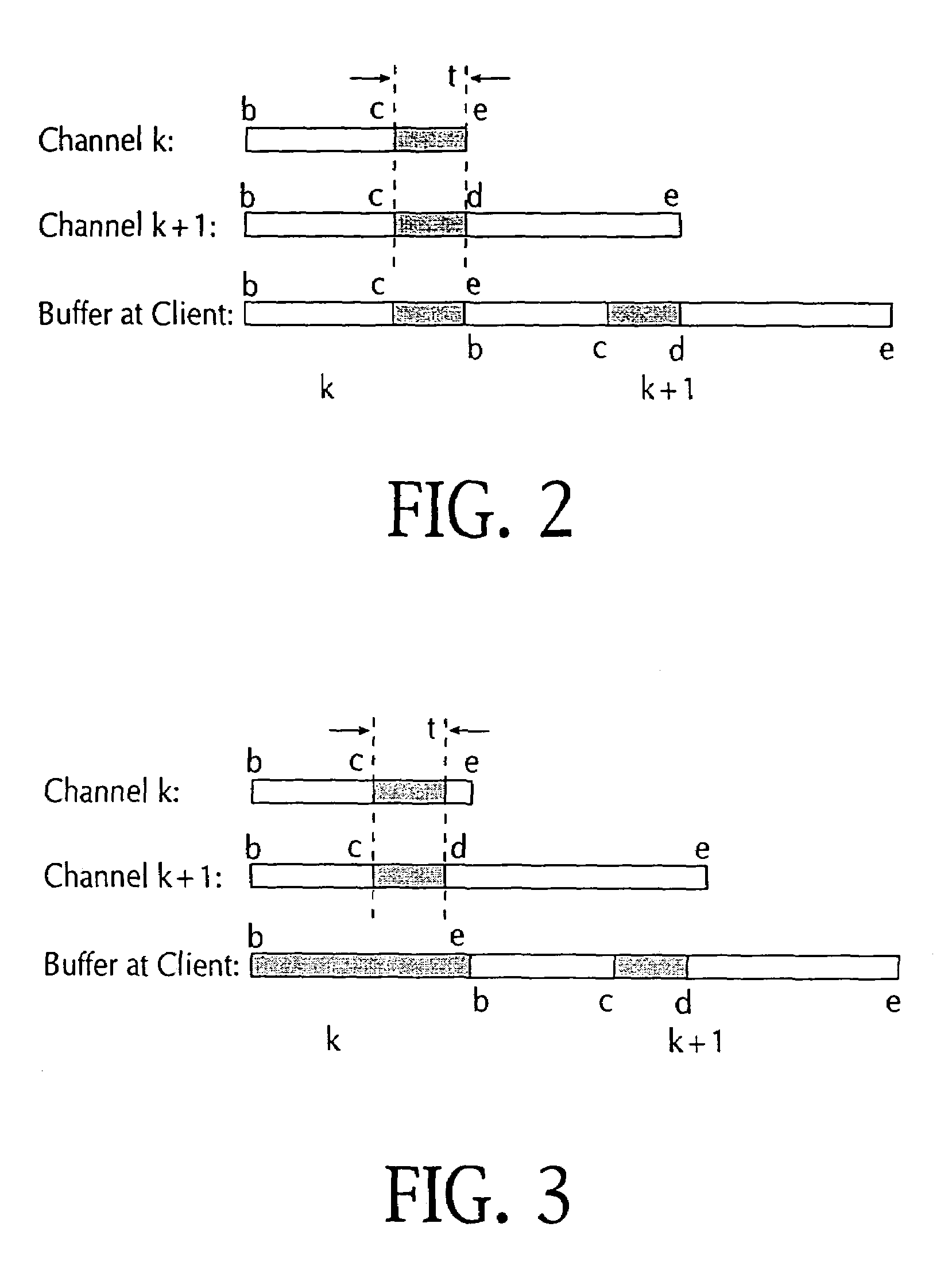Providing VCR functionality for data-centered video multicast
a video multicast and data-centered technology, applied in the field of video on-demand multicasting, can solve the problems of sacrificing the special requirements of each individual user, vcr functions such as pause, fast forward, fast rewind and jump to new location are difficult to provide in data-centered multicast systems, etc., to achieve the effect of reducing storage requirements and speed
- Summary
- Abstract
- Description
- Claims
- Application Information
AI Technical Summary
Benefits of technology
Problems solved by technology
Method used
Image
Examples
case 1 (fig.4)
[0032]If the destination point p is located at or before the channel point ci, we call the segment containing the desired destination current segment and we assume it is segment k and broadcast in channel k. First we give the rules for this case. After that, we consider the cased in which the destination point p is located after the channel point ci.[0033]Case 1 (FIG. 4): Sk=Sk+1. This is the case in which the size of the current segment is equal to the size of the next segment. It is abbreviated as (x, x) case.[0034]If pck is in the buffer, then p is feasible; otherwise, the later nearest feasible point is the point q such that qck are in the buffer with the smallest q value.[0035]Case 2 (FIG. 5): Sk+1=2*Sk and Sk+2=Sk+1. This is the case in which the size of the current segment is half of the size of the next segment and the next two segments are of equal size. It is abbreviated as (x, 2x, 2x) case.[0036]case 2.1 ck=Ck+. This is case in which the broadcasting position of channel k...
case 3 (fig.6)
[0040]Case 3 (FIG. 6): Sk+1=2* Sk+1 and Sk+2=2* Sk+1. This is the case in which the size of the current segment is half of the next segment and the size of next segment is in turn half of the size of its next segment. It is abbreviated as (x, 2x, 4x) case.[0041]case 3.1 ck=Ck+1=ck+2. This is case in which the broadcasting position of channels k, k+1 and k+2 are the same, or they are left aligned.[0042]If pck, bk+1ck+1 and bk+2ck+2 are in the buffer, then p is feasible; otherwise, if bk+1ck+1 and bk+2ck+2 are in the buffer, the later nearest feasible point is the point q such that qck are in the buffer with the smallest q value; if bk+2ck+2 is in the buffer and bk+1ck+1 is not all in the buffer, the later nearest feasible point is in the point q such that qck+1 is in the buffer with the smallest q value: if bk+1ck+1 is not in the buffer, the later nearest feasible point is the point q such that qck+2 is in the buffer with the smallest q value:[0043]case 3.2 ck=Ck+1 ≠ ck+2. This is ca...
PUM
 Login to View More
Login to View More Abstract
Description
Claims
Application Information
 Login to View More
Login to View More - R&D
- Intellectual Property
- Life Sciences
- Materials
- Tech Scout
- Unparalleled Data Quality
- Higher Quality Content
- 60% Fewer Hallucinations
Browse by: Latest US Patents, China's latest patents, Technical Efficacy Thesaurus, Application Domain, Technology Topic, Popular Technical Reports.
© 2025 PatSnap. All rights reserved.Legal|Privacy policy|Modern Slavery Act Transparency Statement|Sitemap|About US| Contact US: help@patsnap.com



